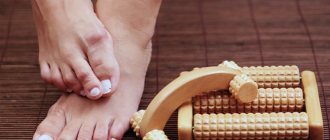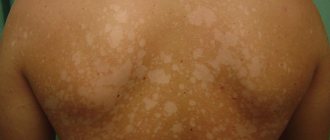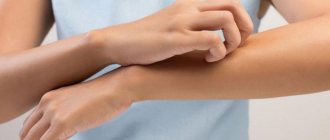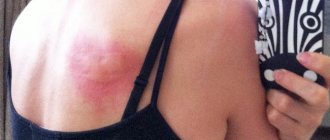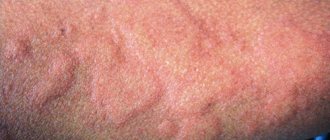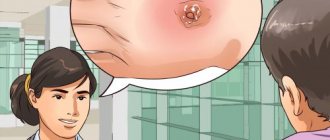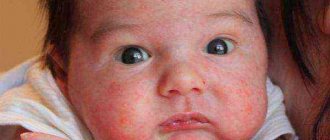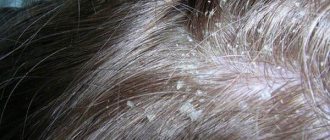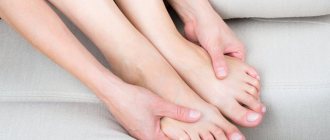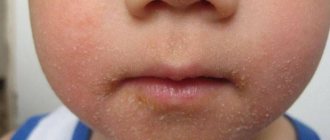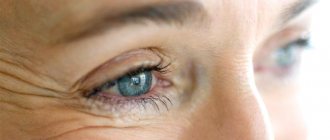Foot fungus is a fairly common problem that worsens the appearance of the foot and causes a lot of discomfort. Often, the first symptoms of infection are not paid attention to, attributing them to wet shoes or other reasons, and when the fungus spreads along the leg, spreads to the nails and begins to destroy them, treatment requires much more effort and expense.
The most important things about foot fungus
The microorganisms that cause the fungus were finally studied by the beginning of the 20th century. Before the first antifungal agents appeared, antiseptic drugs and potassium iodide were widely used to combat fungus.
Mycosis of the feet is a disease that does not manifest itself immediately. Due to late access to a doctor, the patient has to spend more effort to get rid of the unpleasant problem.
The presence of fungus is indicated by the following signs:
- thickened nail plates, the structure and color of which have changed (the appearance of spots, inclusions, grooves);
- fragility of the nail plate, which may even crumble;
- white plaque under the nail plates;
- redness and swelling of the skin around the nails;
- pain within the skin affected by the fungus;
- separation of nails from nail beds;
- the appearance of an unusual fetid smell of rot.
The patient is concerned about burning sensations, itching, and cracking of the skin in the interdigital area. Anyone can become infected, regardless of age and gender.
Causes of infection:
- visiting public places where a person is expected to be without shoes: baths, saunas, swimming pools, showers in the fitness center, beaches;
- seeking pedicure services in establishments with poorly processed instruments;
- tendency to hyperhidrosis (sweating), as the fungus multiplies more actively in a humid environment;
- wearing shoes that are too tight;
- using someone else's shoes;
- weakened immune system;
- pathologies of the endocrine system;
- chronic forms of internal diseases;
- obesity;
- antibiotic abuse;
- HIV infection.
It is also worth carefully monitoring the health of your pets' skin. Signs such as redness of the skin, changes in the structure of the coat and the appearance of bald spots are a reason to contact a veterinarian.
It is important to seek help in a timely manner. A dermatologist will be able to make an accurate diagnosis.
An advanced form of onychomycosis (fungus of the nail plate) can provoke allergic diseases of various types and bronchial asthma. Self-medication is dangerous, since the symptoms of mycosis of the feet are similar to the signs of some other diseases (onychodystrophy, anemia, psoriasis).
The following studies can identify the type of mycosis pathogen:
- microscopy of skin obtained through biopsy;
- microscopy of colored preparations – biosubstrates;
- cultural microscopy (bacteria culture);
- cytology of materials;
- histology of biosubstrates;
- immunological diagnostics for the determination of antibodies to pathogenic microorganisms.
Lamisil
An effective remedy for combating fungal infections of the feet based on the active ingredient – terbinafine. Lamisil is most effective in combating fungal infections at an early stage of development. For more advanced stages of infection, it would be advisable to choose another drug or supplement Lamisil with another antifungal agent. The duration of the course of treatment is at least two weeks, provided that the drug is applied twice to the affected areas of the body. The drug is available in various dosage forms: cream, spray, gel and solution. All forms of Lamisil are very effective, but precisely because of its strong effect, the drug is not recommended for use by pregnant and lactating women, as well as children under 12 years of age.
What are antifungal ointments
Antifungal ointments for feet are drugs that a doctor necessarily prescribes to a patient with mycosis of the foot. They play a primary role in the treatment of such diseases.
With their help, the following tasks are solved:
- the inflammatory process stops;
- burning and itching are eliminated;
- skin damage heals;
- dead cells are sloughed off;
- blood circulation in the affected area is activated;
- tissue regeneration starts;
- microorganisms that cause the disease are destroyed.
To prevent the development of the disease, at its initial stage for treatment it is enough to lubricate the affected areas with antiseptic ointments, which will destroy pathogenic bacteria and fungi and prevent them from multiplying. At subsequent stages of the disease, the use of antimycotic agents is required.
Rules for the treatment of fungal infections on the feet
The first and main therapeutic approach is local treatment of the skin and nails of the feet with antifungal foot creams. The rest will depend on the stage of advanced disease and the severity of symptoms.
For example, if the nail plate is severely damaged, a decision is sometimes made to remove the nail. This significantly speeds up the process of killing the fungus and healing the skin.
In case of advanced disease, when the affected area is large, the doctor may prescribe systemically acting medications - tablets with antifungal action.
If a patient scratches the skin of his feet due to severe itching, other bacteria can penetrate through cracks and microtraumas, and then a bacterial infection occurs. The skin and subcutaneous tissue may become inflamed. This will worsen the course of the disease and symptoms. In the context of treatment, this is a more complex case than just mycosis of the feet, since the combination of fungus and bacteria is quite resistant to antibiotic therapy.
The main thing in the treatment process is to follow the course duration indicated by the doctor and the instructions for using the cream. If you leave mycosis untreated, the fungus may become resistant to the active components of medicinal creams, and further treatment will be much more difficult. For onychomycosis, it is recommended to regularly use the cream until the nail plate is replaced twice - this period will guarantee a complete cure.
Compound
The active components in the formulation of antimycotic drugs are:
- terbinafine;
- butenafine;
- naftifine;
- sertaconazole nitrate;
- ketoconazole;
- bifonazole
Auxiliary components include:
- purified water;
- herbal extracts;
- urea;
- vitamins;
- essential oils;
- polysorbate;
- glycerol;
- vitamins;
- propylene glycol;
- wax;
- monoglycerides;
- Vaseline (oil);
Classification
Antifungal ointments for feet are divided into the following groups:
- azoles;
- allylamines;
- antibiotics;
- antiseptics.
The criterion for such division is the type of the main active ingredient.
| Azoles | Allylamines | Antibiotics | Antiseptics |
| Sertaconazole nitrate; ketoconazole; bifonazole | Butenafine; naftifine; terbinafine | Nystatin; Amphotericin B; Mycoheptin. | Sulfur; zinc; salicylic acid. |
According to the criterion of “indications for use,” antimycotics are divided into 2 groups:
- aimed at combating the consequences caused by pathogenic fungi (deep mycoses);
- ointments that eliminate symptoms caused by opportunistic fungi (candidiasis).
In addition, all antimycotics are divided into:
- broad-spectrum drugs (act on several types of microorganisms);
- medications that work with a specific type of microorganism.
Another criterion is the impact zone.
According to it, antimycotics are divided into three groups:
- affect the upper keratinized upper layer of the skin - the epidermis (keratomycosis);
- has an effect on tissues affected by the Candida fungus;
- restore the health of the nail plates in case of onychomycosis.
According to the mechanism of pathogen destruction, drugs are divided into 2 groups:
- destroying the integrity of the cell membranes of pathogenic organisms;
- preventing the growth of fungal spores by disrupting the production of ergosterol in the cell membrane of pathogenic microorganisms.
General recommendations for use
Antifungal ointments for feet should be used according to the following technology:
- steaming soap foot bath;
- thoroughly dry your feet with a towel (preferably a disposable one);
- removing affected tissue with a special file (grater) or pumice stone;
- antiseptic treatment of skin and nails;
- applying the product to diseased tissue (in a thin layer) and to the healthy part of the skin that is adjacent to the lesion (about 1 cm).
General recommendations for the treatment period:
- change clothes that come into contact with the affected area daily;
- in case of foot fungus, additionally treat the inner surface of the shoe;
- when visiting public places, you need to use disposable shoes or shoes that can be easily treated with antiseptics;
- shoes of a patient with mycosis need regular antiseptic treatment.
- Antibacterial ointments (zinc, sulfur, Teymurova) eliminate the unpleasant odor. It is important to apply this type of product to dry skin to achieve good results.
Causes of mycosis of the feet
Fungal infection of the skin of the foot is called mycosis, and if the nail is affected, then onychomycosis. The causative agent is the fungus Thrichophyton rubrum, sometimes Throchophyton mentagrophytes. Less commonly, when analyzing the affected tissue, traces of yeast or mold are found.
The route of infection with mycosis or onychomycosis is through contact and household contact. The pathogen gets on the skin of the feet in swimming pools, baths, and other public places, where even indirect contact with the carrier of pathogenic microflora is possible. The same applies to sharing towels, shoes, bath accessories, linen, etc. with the patient.
The proliferation of the parasite on the skin is facilitated by excessive sweating of the feet, tight shoes, shoes made of low-quality materials, etc. Some doctors also include flat feet here.
At risk are people with weak immunity, those suffering from endocrine disorders, as well as those who have impaired normal blood circulation in the legs, this happens with varicose veins or cardiovascular diseases. If the fungus may not take root on the skin of a healthy person, then people with the listed abnormalities are likely to become infected upon contact with the pathogen.
Antimycotic ointments
Antifungal ointments for feet have the following features:
- perform fungicidal and fungistatic functions (kill fungal spores and prevent them from reproducing);
- used at the onset of the disease, as independent agents, and in combination with similar drugs;
- due to the targeted effect on the affected areas, they are devoid of negative effects and are completely safe;
- They work efficiently and have affordable prices.
Clotrimazole
The main active ingredient in this drug is clotrimazole. This antimycotic agent disrupts the synthesis of ergosterol, which is an integral part of the fungal cell membrane. At increased concentrations, it destroys pathogenic microorganisms.
The drug effectively fights the following microorganisms:
- dermatophytes;
- pathogens of erythrasma;
- pathogens of lichen versicolor;
- yeast-like and moldy fungi.
Clotrimazole is applied topically. Apply directly to the affected area (2 - 3 times a day on cleaned tissues). After application, rub in. The duration of treatment is no more than 4 weeks.
The cost of the ointment varies from 38 to 440 rubles.
Patients note the effectiveness of Clotrimazole and reasonable price. The drug is especially good at killing Candida fungus. Doctors also trust this time-tested medicine.
Terbinafine
The main place in the composition is given to terbinafine hydrochloride. The medicine is a broad-spectrum ointment.
Affects:
- dermatophytes;
- yeast mushrooms;
- molds and some dimorphic fungi.
Terbinafine is used as an ointment for topical application to the affected area and nearby healthy tissue. It should be applied 1-2 times a day to prepared skin. After application, rub in. Treatment lasts up to 2 weeks. The cost of the drug is 73 - 176 rubles.
Patients often choose this drug as a cheap alternative to Lamisil. The product has proven itself as an effective assistant in the fight against foot fungus. Doctors note that the drug is well tolerated.
Nizoral
Ketoconazole is the main substance included in the drug. Nizoral effectively fights dermatophytes and yeast fungi. It immediately relieves itching and other unpleasant manifestations of mycosis of the feet. The cream is applied 1-2 times a day (according to the type of pathogenic organisms) to the affected area and adjacent healthy tissue. Treatment lasts 2 – 6 weeks.
Nizoral (in cream form) costs 500-700 rubles. Patients note the effectiveness of the medicine and the sustainable results of treatment. Doctors widely use it in their practice.
Exoderil
The main active ingredient is naftifine hydrochloride. It has a destructive effect on the cell membrane of fungi.
Exoderil is aimed at combating the following protozoa:
- dermatophytes;
- mold;
- yeast mushrooms;
- mushroom Sporothrix schenckii.
The drug is used by lubricating the affected area once a day, covering healthy tissue. The duration of treatment is 2-8 weeks. The cost of Exoderil ranges from 500 to 800 rubles.
People talk about the quick action that this medicine has. Doctors attribute this to the anti-inflammatory properties of the cream. The disadvantage of the drug, according to some people, is the long treatment period.
Mikozan
The main active ingredient is miconazole nitrate. The drug has a destructive effect on the cell membrane of pathogenic microflora.
The cream is effective as a means to combat:
- dermatophytes;
- yeast mushrooms;
- gram-positive microorganisms.
The drug is applied to clean and dry skin 2 times a day (at the beginning of the day and at the end). It is allowed to apply a bandage over the cream. The treatment period lasts from 2 to 6 weeks. The kit comes with files that need to be used to file the nail plate once a day. The price of the product is 500 - 700 rubles.
Patients note that the packaging is economical, easy to use and safe. The effect of treatment occurs over different periods (from several days to a month). There are opinions about the uselessness of Mikozan.
Zalain
The main working substance is sertaconazole nitrate. Sertaconazole inhibits the production of ergosterol in bacterial cells, which provokes their death.
Effective against:
- dermatophytes;
- fungi Candida and Pityrosporum orbiculare;
- gram-positive microorganisms.
The cream is applied to the affected areas and nearby tissues 2 times a day. Treatment can last up to 4 weeks. The cost of the drug ranges from 600 rubles.
Among the advantages of the cream, patients note the absence of odor, good absorption and quick effect of use. Disadvantages include price, uneconomical consumption of funds and short-term treatment results. Some experts call this cream the most effective remedy for mycosis of the feet, which has no equivalent substitute.
Lotseril
The top of the best antifungal agents also includes colorless nail polish – “Loceril”. Thanks to the peculiarities of application, the drug helps fight infection directly on the affected area of the surface of the nail plate. The active ingredient of the varnish - amorolfine - has first-class antifungal properties: it slows down the process of fungus eating the nail, and, with prolonged use, kills the microorganism. It should be noted that the active substances do not poison the patient’s body, even after prolonged use of the drug. The varnish is applied to a previously cleaned and degreased nail plate. The course of treatment is 1-2 weeks. The only disadvantage of the drug is its high cost.
Broad spectrum ointments
Antimycotic ointments for killing fungus on the feet have the following features:
- They affect a group of microorganisms.
- Each drug affects certain types of pathogenic microflora.
- Can be used in complex therapy of mycoses together with other drugs.
Zinc
The active substance in the ointment is zinc oxide.
The drug helps:
- relieve inflammation;
- disinfect wounds;
- dry the affected areas;
- eliminate unpleasant symptoms;
- heal damaged tissues faster.
The ointment is applied to skin pre-treated with an antiseptic 2 times a day. It costs no more than 50 rubles. Patients note the versatility of the product and the ability to use it with the whole family. People are also attracted by the price and good therapeutic qualities of zinc ointment. Doctors recommend it even for infants when treating diaper rash.
Salicylic
The ointment contains only two components - salicylic acid and petroleum jelly.
It performs the following functions:
- antiseptic;
- keratolytic;
- anti-inflammatory;
- exfoliating;
- regenerating;
- softens the stratum corneum of the affected tissue, which allows ointments to better penetrate into the deeper layers of the skin.
The product is applied in the form of applications to the skin. The bandage soaked in it must be changed every 2 - 3 days, until the skin lesions resolve (about 20 days).
The price of the drug (2% version) is no more than 50 rubles. Patients consider the ointment a universal assistant in the fight against skin problems. It is believed that this product should be in every first aid kit. Experts urge the use of such an ointment only after consultation with a doctor.
Sulfuric
The composition of the ointment is as follows:
- sulfur;
- petrolatum;
- emulsifier;
- purified water.
Effect of sulfur ointment:
- performs antiparasitic and antimicrobial functions;
- increases immunity in the affected part of the skin and supports the protective function of the skin;
- softens the top layer of skin;
- has established itself as an ideal remedy for the treatment of scabies.
The ointment is applied to the skin of the entire body (arms, torso, legs) after washing before bed. The linen worn by the patient subsequently must be clean. Then there is a 2-day break. During this period, the ointment cannot be washed off. At the end of the break, the procedure begins again.
When day 5 (the final one) arrives, the product is finally washed off.
This ointment costs no more than 50 rubles. Patients note the high effectiveness of the product, but it helps only at the initial stage of mycosis. Doctors recommend using the drug carefully for people prone to allergies.
Clotrimazole
An effective antifungal agent for the treatment of feet and toenails from various infections. The main pharmacological forms for the treatment of foot fungus are cream and ointment. The active components of Clotrimazole penetrate deep into microorganisms, slow down their growth, damage the cellular structure and kill. The drug perfectly fights all types of pathogenic fungi. The full course of treatment with the drug lasts 3-4 weeks. To prevent relapse, it is recommended to apply Clotrimazole for another week. The drug should not be used by women in the first trimester of pregnancy, or while breastfeeding. A contraindication may be intolerance to certain components of the drug.
The most inexpensive and effective drugs
There are 5 best antimycotic ointments:
- Terbinafine (price up to 200 rubles) works in the deep tissues of the skin and has a long-term healing effect;
- Clotrimazole (average cost 150 rubles) allows you to quickly cope with the disease;
- Zinc ointment (costs about 50 rubles) has a pronounced antibacterial effect, but it is recommended to use it in combination with other drugs;
- Salicylic ointment (no more than 50 rubles) is a powerful antiseptic, but for better results it should be used as an additional remedy;
- Sulfur ointment (price no more than 50 rubles) has an antiseptic effect and relieves itching well, but is contraindicated in case of severe allergies.
How to choose antifungal ointments for feet
When choosing antimycotic ointments, you should pay attention to the following points:
- what type of fungus causes mycosis;
- what substance occupies the main place in the preparation;
- in what concentration the active substance is contained;
- are there any contraindications;
- what adverse reactions the ointment can cause;
- how the drug affects fungal cells;
- compatibility with other drugs;
- price.
Homemade ointments for fungus
As an aid to getting rid of mycosis of the feet, you can use homemade ointments:
- mix glycerin, dimethyl phthalate, acetic acid (70%) and olive oil in a ratio of 1:1:1:2. The ointment should be applied to areas affected by the fungus and not washed off for up to 10 hours. It is better to carry out this procedure at night. After time, the composition is washed off with warm soapy water.
- You can lubricate tissues infected with fungus with essential oils. Tea tree oil is good for these purposes. Before the procedure, your feet must be steamed in a container with hot water and laundry soap. Using an applicator, the oil is applied to the nail plates and does not require rinsing.
Antifungal ointments for the skin of the feet can be replaced with folk remedies. One of them is tea tree oil. - Take Kalanchoe juice (100 g), honey (10 g) and apple cider vinegar (1 tsp). Mix and place in the refrigerator for 72 hours. The product is applied to the nails 2 times a day.
- A clean chicken egg is filled with vinegar (100 g). Place the egg in a dark place and wait until the shell dissolves. Use tweezers to remove the resulting film and combine with butter (200 g). First you need to steam your feet, and then smear them with the resulting ointment. A bandage is applied to the treated areas.
Mycosis of the legs is a common disease that causes a lot of inconvenience to the patient. A timely visit to a dermatologist will allow you to quickly and permanently solve this problem. The main place in the treatment of foot fungus is given to antifungal ointments and creams. They are affordable, effective and easy to use.
Author of the article: Victoria Komarova
Article design: Oleg Lozinsky
For pregnant
During pregnancy, the main rule of any treatment is not to harm the unborn child. During the treatment of fungus, this means choosing drugs exclusively for external use, focusing on their ability to be absorbed into the body.
Of the drugs listed above, the least dangerous for pregnant women are those based on imidazole derivatives. They act only in the thickness of the skin at the site of application, practically without entering the blood. For the same reason, pregnant women are not prescribed allylamines and drugs from other groups.
The final choice will depend on the exact diagnosis, the composition of the drug, its spectrum of action, additional properties and many other factors. The doctor will choose from a variety of drugs the most suitable drug in each case, taking into account minimizing the risks to the fetus.
